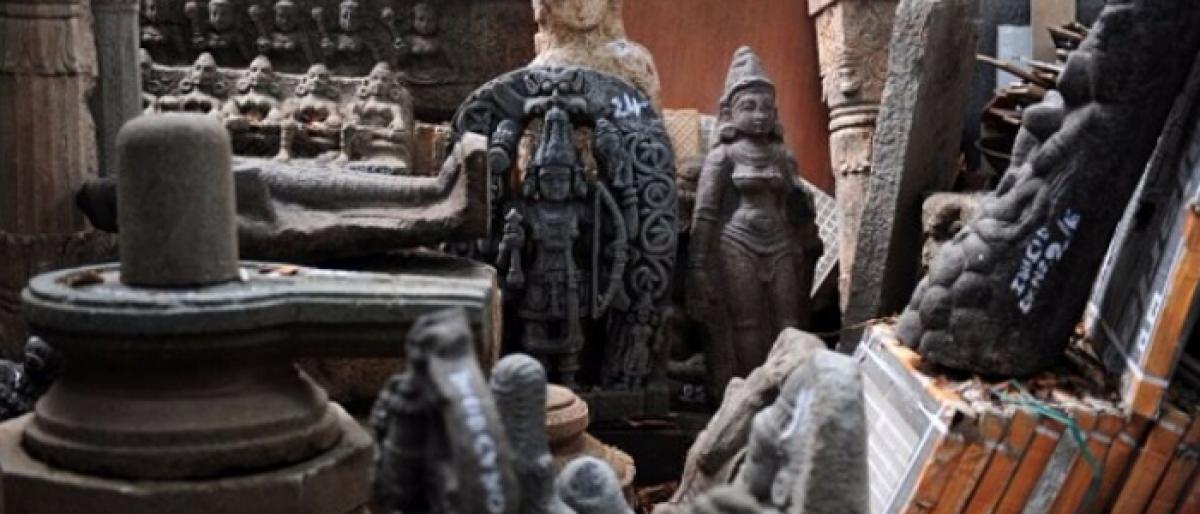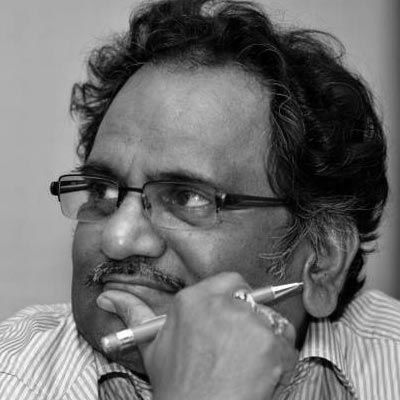Live
- YSRCP Announces Boycott of PAC Elections
- Badshah and Davido tease epic collaboration
- Skills for the future: Adapting education to meet employability demands
- Breaking a Century-Old Rule: How Garg’s Team Challenges Bredt’s Rule in Organic Chemistry
- Neha Bhasin rocks with her debut rap song
- Moong Dal Ki Kachori: A delightful crispy treat
- Vivo Warns the Risks of UV-Cured Screen Protectors; Check Vivo's Recommendations
- BJP, Congress turncoats in AAP's first list
- Adani tried to enter Delhi's power sector: AAP's Sanjay
- International Kabaddi Federation sanctions World Super Kabaddi League 2025
Just In

The efforts to secure back Kohinoor and other ancient artifacts is a highlevel exercise depending upon Indias relations with foreign countries, good will established by the leadership of the Government of India and strategic steps of the officers of external affairs
The efforts to secure back Kohinoor and other ancient artifacts is a high-level exercise depending upon India’s relations with foreign countries, good will established by the leadership of the Government of India and strategic steps of the officers of external affairs.
For instance, a 12th century bronze sculpture of Buddha stolen from Archaeological Museum in Nalanda nearly 60 years ago, in 1961, is to be returned to the country after it was discovered at a trade fair in the UK. The sculpture will reportedly be handed over to the Indian High Commissioner to the UK. It was reported that the statue was identified at a trade fair in March by the members of the Association for Research into Crime Against Art (ARCA), an organisation working to preserve cultural heritage, and the India Pride Project, which aims to recover stolen artifacts.
The India Pride Project initiatives included return of Bronze Nataraja (10th Century AD) stolen in 2005; it was located in Australia and gifted to Indian Prime Minister in September 2014 by Australian PM; Bronze Parvathi (10th Century AD) stolen in 2005 and located in Singapore; Bronze Somaskhanda (10th Century AD) stolen in 1956 and located in America; and, Bronze Ganesha (10th Century AD) stolen in 2005 and located in America.
Dr Kirit Mankodi is an independent archaeologist who campaigns for return of stolen Indian antiques. He maintains a record of these artifacts in an open website at www.plunderedpast.in. He wrote as follows:
“The US immigration and customs department (ICE/DHS) has seized $100-million worth antiquities from Subhash Kapoor who is undergoing trial in Tamil Nadu for stealing idols from a temple in Ariyalur. ICE is keen to return the items but has been unable to find a matching interest on the part of Indian authorities.
For instance, among the antique pieces, is a Chola-era stone sculpture of Buddha, likely stolen from Tamil Nadu. Another is a Bharhut Yakshi - worth $15 million in the art market and the most expensive item so far found in the Kapoor catalogue -- stolen from a shrine in Madhya Pradesh. The Mahakoka (the great bird-voiced goddess) sandstone sculpture was recovered from a 2,200 year-old Buddhist stupa excavated by Alexander Cunningham, pioneer of archaeology in India, at Bharhut near Satna in Madhya Pradesh in 1873. The family who inherited this sculpture had wisely registered it under the relevant act in 1977, when they also submitted its photographs to the archaeological authorities.
In July 2004, the Great Bird Goddess was stolen from the household shrine. The theft was reported to the police, and the ASI was also informed. The owners declared a reward of Rs 50,000 for the recovery of what was for them their family deity. With the lodging of the FIR, the matter seems to have rested in the files, for both the police and the ASI. Personal exploration by this writer around Pataora, only a few kilometres from Bharhut, helped locate the family whose deity she was. The photographs submitted by the owner at the time of registration matched those sent by DHS, proving that what the DHS officials had intercepted was indeed the sculpture that had been stolen. The ASI and culture ministry have been made aware of all this. Since the time the owner of the sculpture came to know about the sculpture's recovery in the US, he has made many visits to the ministry and ASI's offices.
In the case of the Chola-era Buddha, the sculpture has been lying at the DHS warehouse. The officials want an explanation of how the Buddha got to Kapoor. The provenance of the Buddha as furnished by Kapoor is suspicious and similar to the provenance certificates he fabricated for other antiquities. The state ASI told me that the Buddha is not from any of the sites under its protection. I have not received a response from the local archaeology department for my requests for cooperation.”
The PMO and the Ministry of Culture should take note of the concerns expressed by this enthusiastic independent archeologist. This shows that India needs to show matching interest in recovering these artifacts of immeasurable value. Ministry of Culture and ASI has a duty to respond to queries of such organisations. Similarly, if any of such efforts are gaining results that could be possibly within the reach of PMO. If they have done something to regain those symbols of our glorious past either through diplomatic means or ARCA, the PMO would be better equipped to inform the appellant rather than others.
More than 3,500 sites and monuments notified under the ASI protection, other ancient monuments which are not under any official protection, form part of India’s/World’s heritage. Constitution enjoins upon all Indian nationals to protect and preserve this heritage. Laws prohibit removal and smuggling of these antiquities, whether protected or not. Such thefts from officially notified sites, the offence is greater.
There is a steady stream of thefts and smuggling of antiques after destruction and mutilation. If in the past foreign invaders destroyed, now in these days, criminals are mutilating artifacts and removing them for smuggling. They cut off the head of a sculpture to steal, smuggle and sell it. Tragedy is that there is no centralised documentation exists in India about thefts or smuggling of art objects. Actionable information is not made available by the ASI.
The monument from where artifacts are stolen, description of stolen antique, measurements and photographs and details of the FIR should be made public through all possible media. The complaints and FIRs should also contain photographic evidence of stolen objects, which should be duly publicised so that smuggling becomes difficult. There should be such public documentation of thefts which will help in preventing stolen things from crossing borders.
Because of the alerts issued www.plunderedpast.in, two stolen sculptures could be recovered. The Commission recommended that ASI should take similar efforts to publish alerts, photos and FIRs about thefts, besides developing centralized public documentation of thefts with full details and photographs. People legitimately expect to know about efforts and their effects, to reclaim the ancient artifacts within one month, if possible, if not, as soon as possible.

© 2024 Hyderabad Media House Limited/The Hans India. All rights reserved. Powered by hocalwire.com







